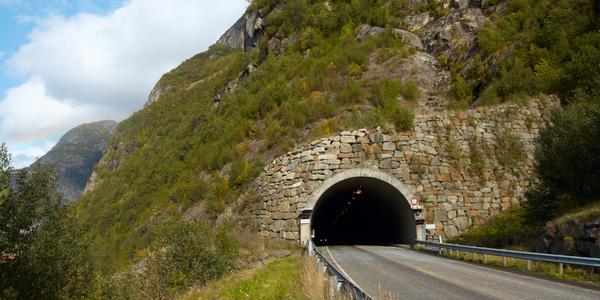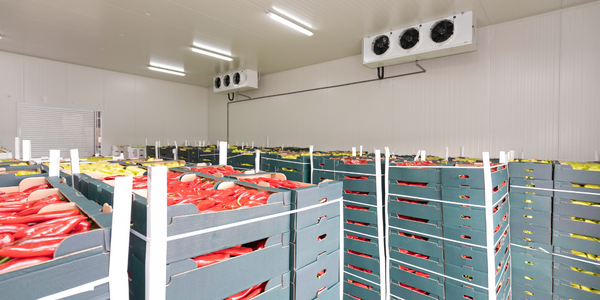Technology Category
- Analytics & Modeling - Digital Twin / Simulation
- Infrastructure as a Service (IaaS) - Cloud Computing
Applicable Industries
- Construction & Infrastructure
- Transportation
Applicable Functions
- Maintenance
- Product Research & Development
Use Cases
- Construction Management
- Digital Twin
Services
- System Integration
- Testing & Certification
About The Customer
POWERCHINA Huadong Engineering Corporation Limited (HDEC) is a leading engineering corporation that was hired to digitally engineer the entire Line 1 of the Shaoxing Urban Rail Transit, including project management, overall consultation, survey, design, construction, and handover to operations and maintenance. The company is known for its innovative approach to engineering and construction, often leveraging advanced technology to improve efficiency, productivity, and quality of design, construction, commissioning, and handover of projects. For the Shaoxing Urban Rail Transit Line 1 project, HDEC faced the challenge of integrating with existing infrastructure assets, dealing with complex hydrogeological conditions, and coordinating with multiple design and construction disciplines, as well as governmental departments.
The Challenge
The Shaoxing Urban Rail Transit Line 1, the largest infrastructure project in the history of Shaoxing, China, was a complex undertaking due to its confined sub-surface envelope and complex hydrogeological conditions. The CNY 24 billion railway project was mainly underground, requiring the design to pass through a confined sub-surface envelope with the potential for leakage within foundation pits during construction. The project also had to integrate with existing infrastructure assets to serve commuter passengers within the city and connect with the city of Hangzhou along the Hangzhou-Shaoxing inter-city line. The railway passes through Shaoxing’s old town, which features narrow roads with large traffic flows, river courses, 26 bridges, two railways, and cultural and historical protection zones, making planning and traffic organization difficult. These challenges were compounded by issues with integrating the numerous technical interfaces used by the multiple design and construction disciplines, as well as the governmental departments in Shaoxing and Hangzhou.
The Solution
To overcome these challenges, POWERCHINA Huadong Engineering Corporation (HDEC) implemented intelligent design, construction, operations, and maintenance processes. They sought to maximize data potential and adopt advanced digital workflows by establishing an urban rail and transit engineering data center and unified construction management platform to digitalize all assets and processes throughout the project lifecycle. Leveraging Bentley’s open, collaborative design applications and iTwin technology, HDEC digitalized data and workflows to establish a digital twin. They used aerial photography and ContextCapture to create a 3D reality grid enabling them to more realistically visualize the landscape conditions, architecture, and road network that comprise the city. With ProjectWise as the foundation, they built an engineering digital collaboration and construction management platform that included all project data and models, providing a unified collaborative environment to manage and coordinate more than 20 participating units.
Operational Impact
Quantitative Benefit

Case Study missing?
Start adding your own!
Register with your work email and create a new case study profile for your business.
Related Case Studies.

Case Study
IoT System for Tunnel Construction
The Zenitaka Corporation ('Zenitaka') has two major business areas: its architectural business focuses on structures such as government buildings, office buildings, and commercial facilities, while its civil engineering business is targeted at structures such as tunnels, bridges and dams. Within these areas, there presented two issues that have always persisted in regard to the construction of mountain tunnels. These issues are 'improving safety" and "reducing energy consumption". Mountain tunnels construction requires a massive amount of electricity. This is because there are many kinds of electrical equipment being used day and night, including construction machinery, construction lighting, and ventilating fan. Despite this, the amount of power consumption is generally not tightly managed. In many cases, the exact amount of power consumption is only ascertained when the bill from the power company becomes available. Sometimes, corporations install demand-monitoring equipment to help curb the maximum power demanded. However, even in these cases, the devices only allow the total volume of power consumption to be ascertained, or they may issue warnings to prevent the contracted volume of power from being exceeded. In order to tackle the issue of reducing power consumption, it was first necessary to obtain an accurate breakdown of how much power was being used in each particular area. In other words, we needed to be able to visualize the amount of power being consumed. Safety, was also not being managed very rigorously. Even now, tunnel construction sites often use a 'name label' system for managing entry into the work site. Specifically, red labels with white reverse sides that bear the workers' names on both sides are displayed at the tunnel work site entrance. The workers themselves then flip the name label to the appropriate side when entering or exiting from the work site to indicate whether or not they are working inside the tunnel at any given time. If a worker forgets to flip his or her name label when entering or exiting from the tunnel, management cannot be performed effectively. In order to tackle the challenges mentioned above, Zenitaka decided to build a system that could improve the safety of tunnel construction as well as reduce the amount of power consumed. In other words, this new system would facilitate a clear picture of which workers were working in each location at the mountain tunnel construction site, as well as which processes were being carried out at those respective locations at any given time. The system would maintain the safety of all workers while also carefully controlling the electrical equipment to reduce unnecessary power consumption. Having decided on the concept, our next concern was whether there existed any kind of robust hardware that would not break down at the construction work site, that could move freely in response to changes in the working environment, and that could accurately detect workers and vehicles using radio frequency identification (RFID). Given that this system would involve many components that were new to Zenitaka, we decided to enlist the cooperation of E.I.Sol Co., Ltd. ('E.I.Sol') as our joint development partner, as they had provided us with a highly practical proposal.

Case Study
Airport SCADA Systems Improve Service Levels
Modern airports are one of the busiest environments on Earth and rely on process automation equipment to ensure service operators achieve their KPIs. Increasingly airport SCADA systems are being used to control all aspects of the operation and associated facilities. This is because unplanned system downtime can cost dearly, both in terms of reduced revenues and the associated loss of customer satisfaction due to inevitable travel inconvenience and disruption.

Case Study
IoT-based Fleet Intelligence Innovation
Speed to market is precious for DRVR, a rapidly growing start-up company. With a business model dependent on reliable mobile data, managers were spending their lives trying to negotiate data roaming deals with mobile network operators in different countries. And, even then, service quality was a constant concern.

Case Study
Digitize Railway with Deutsche Bahn
To reduce maintenance costs and delay-causing failures for Deutsche Bahn. They need manual measurements by a position measurement system based on custom-made MEMS sensor clusters, which allow autonomous and continuous monitoring with wireless data transmission and long battery. They were looking for data pre-processing solution in the sensor and machine learning algorithms in the cloud so as to detect critical wear.

Case Study
Cold Chain Transportation and Refrigerated Fleet Management System
1) Create a digital connected transportation solution to retrofit cold chain trailers with real-time tracking and controls. 2) Prevent multi-million dollar losses due to theft or spoilage. 3) Deliver a digital chain-of-custody solution for door to door load monitoring and security. 4) Provide a trusted multi-fleet solution in a single application with granular data and access controls.

Case Study
Vehicle Fleet Analytics
Organizations frequently implement a maintenance strategy for their fleets of vehicles using a combination of time and usage based maintenance schedules. While effective as a whole, time and usage based schedules do not take into account driving patterns, environmental factors, and sensors currently deployed within the vehicle measuring crank voltage, ignition voltage, and acceleration, all of which have a significant influence on the overall health of the vehicle.In a typical fleet, a large percentage of road calls are related to electrical failure, with battery failure being a common cause. Battery failures result in unmet service agreement levels and costly re-adjustment of scheduled to provide replacement vehicles. To reduce the impact of unplanned maintenance, the transportation logistics company was interested in a trial of C3 Vehicle Fleet Analytics.



